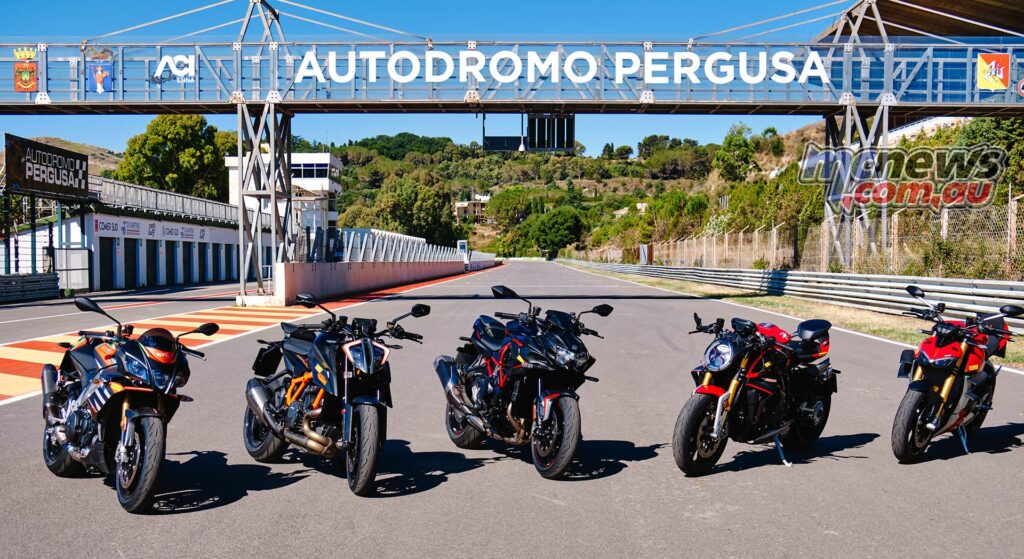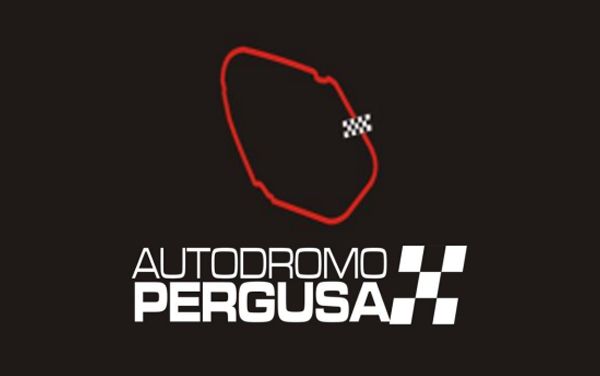Motorcycle comparison by Adam Child ‘Chad’
Images by Fabio Grasso
Nearly 1000 horsepower and $200,000 worth of unfaired machinery at our disposal
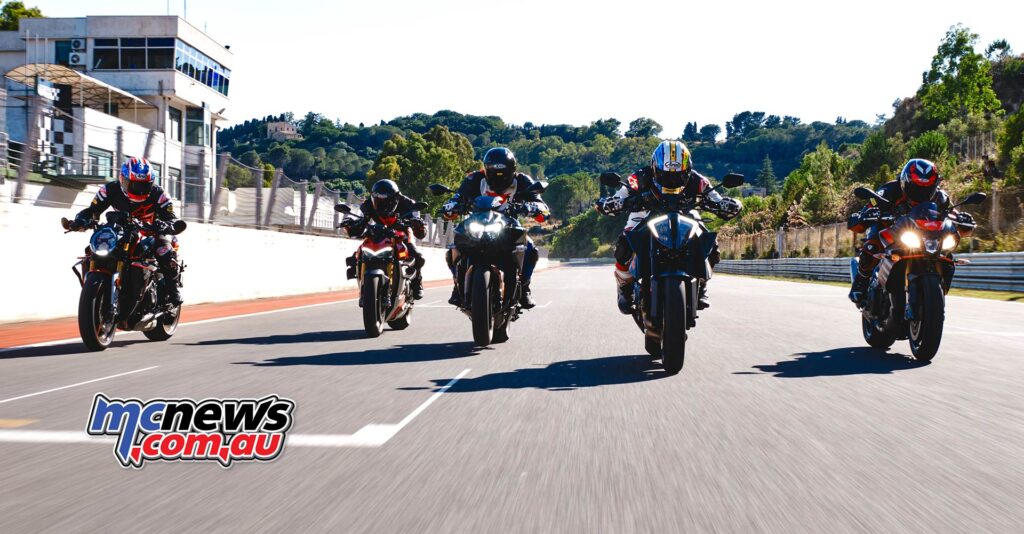
To help us find a winner we recruited Pirelli, who not only provided us with control tyres for the road and track, but also the use of their stunning Pergusa race track in Sicily. Pergusa is a former World Superbike track, very fast with long straights and is nearly five-kilometres in length. But we’re not just focusing on laps times, we’ll cover around 350-kilometres on the stunning roads around Mount Etna. Furthermore we will weigh and dyno each bike. Two days on track, one day on the road, plus dyno and detailed track analysis – this really is the ultimate super-naked group test.
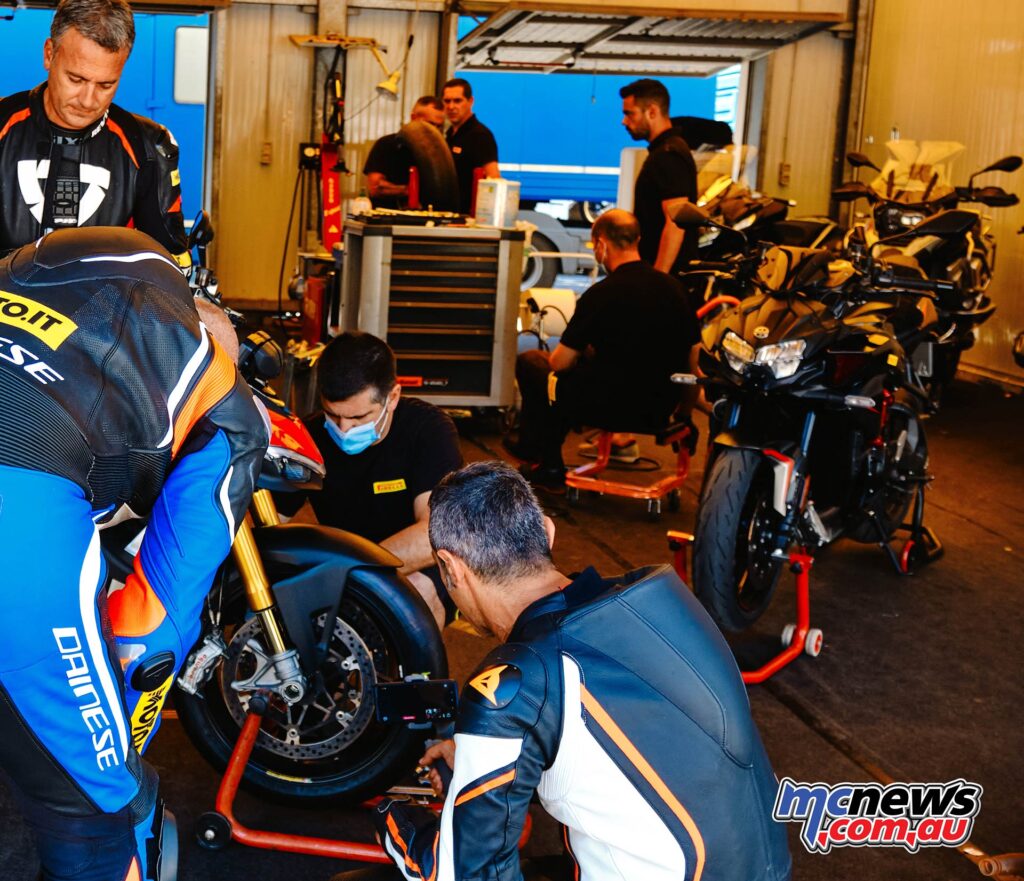
The super-naked market is booming with an onslaught of new models for 2020. We’ve selected the ultimates, the most desirable, the fastest and most powerful, where money is no object: the MV Brutale 1000RR, Ducati Streetfighter V4S, Aprilia Tuono V4 1100 Factory, KTM Super Duke 1290R, and Kawasaki ZH2.
1st position: Ducati Streetfighter V4S
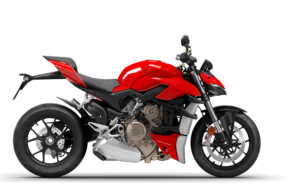
Claimed Power/Torque – 208 hp / 123 Nm
Measured Power/Torque – 175.9 hp / 110 Nm
Tested Weight (Empty Tank) – 178 kg
MLP – $33,900 Ride Away
Our GPS data clearly shows the Ducati’s dominance on track. The Bologna bullet was nearly a second quicker than its closest rival, the Tuono; 2.5-seconds faster than the KTM Super Duke, and it kicks sand in the face of the road biased Kawasaki by a massive 8-seconds. After previously sampling the Ducati on track I knew it was fast, but I didn’t think it would be that far ahead.
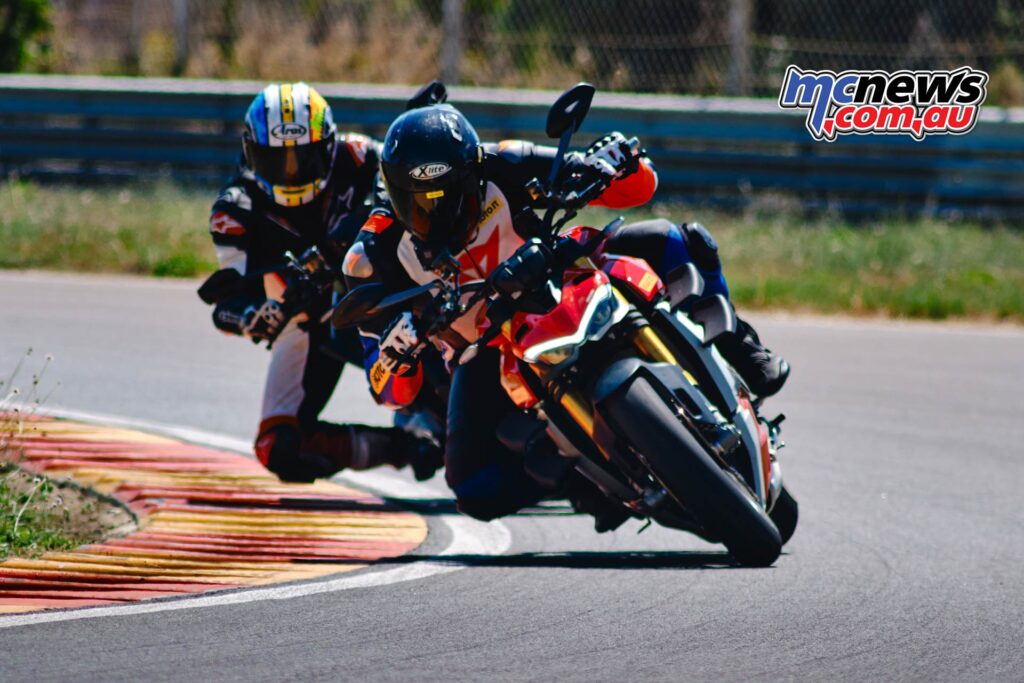
Looking at acceleration it was again another easy victory for the Ducati with only the supercharged Kawasaki getting close. And finally, its lean angle (53.3 degrees) was huge, another gold star for the Duke with only the KTM getting close.
On the dyno the Ducati and MV both recorded 175 hp, but the Ducati backs it up with far more torque than the MV, as you’d expect with a larger capacity V4.
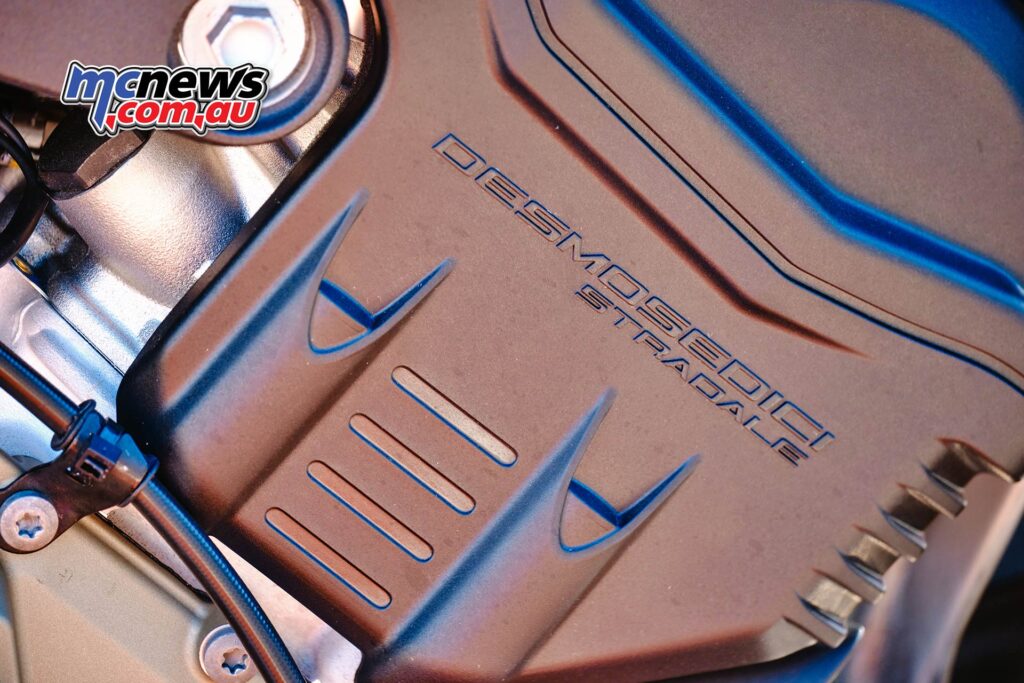
We weighed every bike on Pirelli’s scales and the Ducati came out the lightest (178 kg) 11 kg less than the KTM and a whopping 52 kg lighter than the Kawasaki.
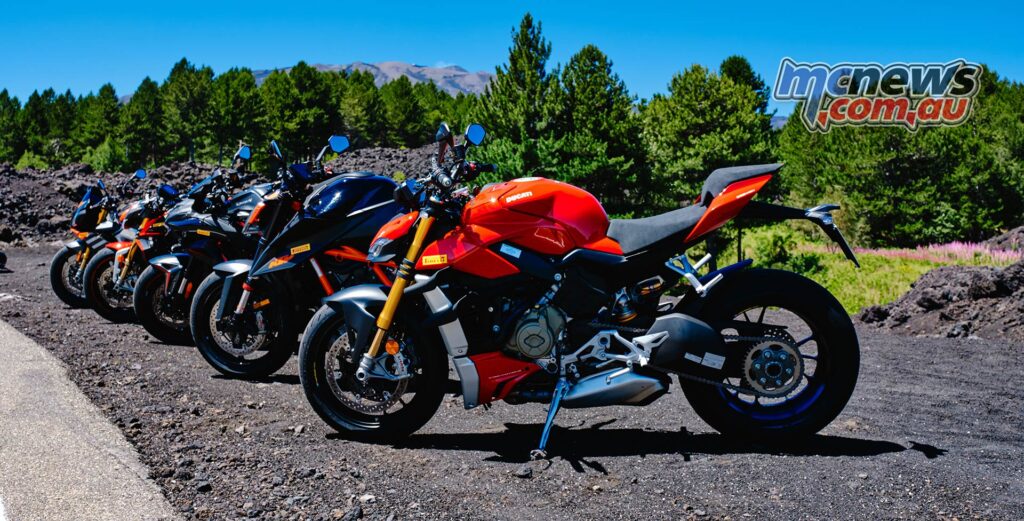
On track you feel that power difference, it is so fast. When the KTM and Aprilia run out of puff the Ducati just keeps revving for another 2000 rpm and more. It is almost like comparing a Superbike to a standard model.
The brakes are also extraordinarily strong. The Ducati was the best on the stoppers, you can hold the lever up to the apex thanks to brilliant ABS. Electronics on the way out of the corners are equally inspiring and, despite that excessive power, you can trust the electronics and the grip generated by the Pirelli slick to generate immense drive.
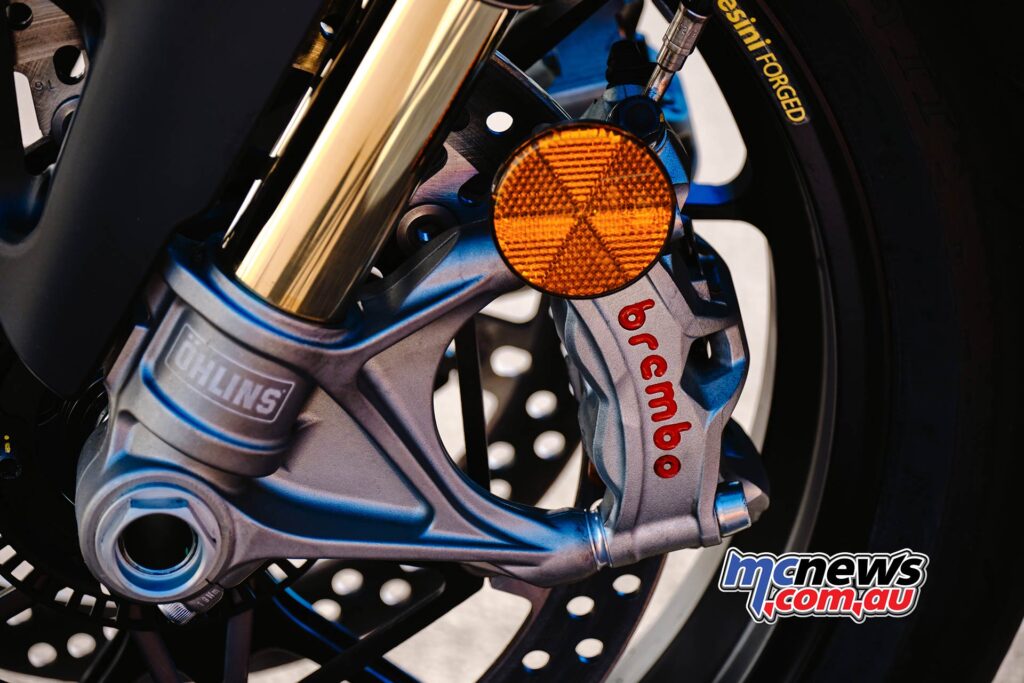
If I had to find a fault, however, the Ducati is the trickiest bike to ride fast purely because it’s just so physical. You’re sat high in the wind bracing yourself against a 250 km/h wind blast. After five laps I was beat, whereas on the KTM I could have kept going all afternoon. The quick-shifter is also very sensitive and I did miss the odd gear on occasion.
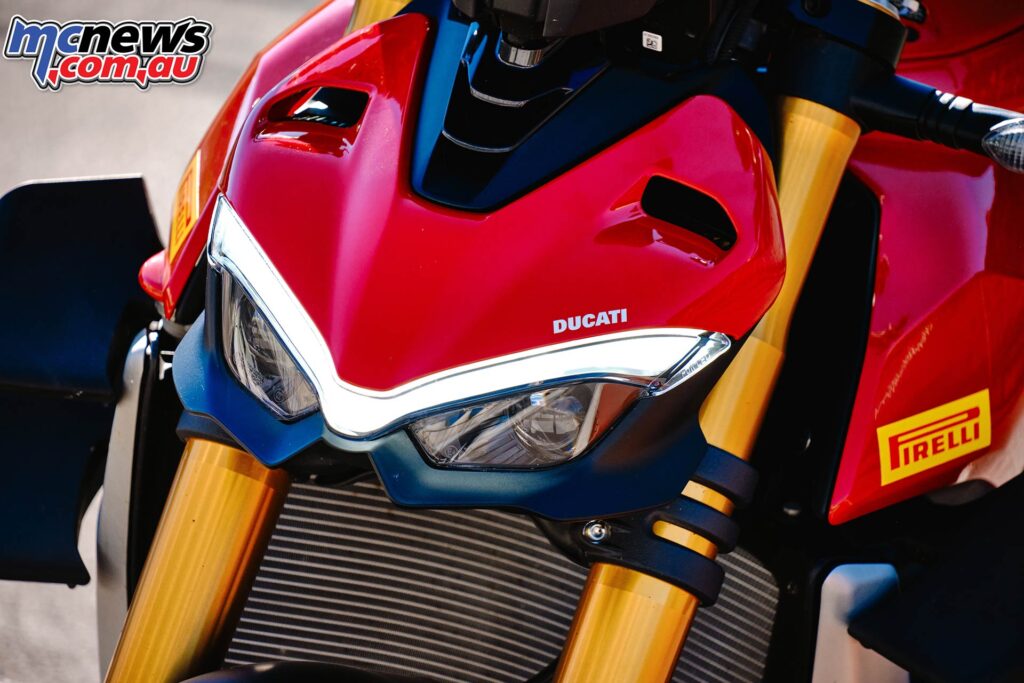
Each bike is good at one or two characteristics: handling is the KTM’s forté, power and drive the Kawasaki’s, fuelling and ride quality belong to the Aprilia, racy stance and revs the MV’s. But equally they all have flaws like poor ABS or too much weight. On track the Ducati scored highly across the board, and had few faults aside from the pure physical challenge of riding a superbike with no bodywork.
2nd position: Aprilia Tuono V4 1100 Factory
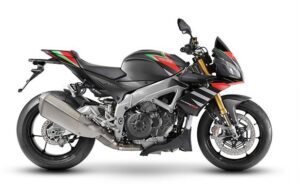 Claimed Power/Torque – 175 hp / 121 Nm
Claimed Power/Torque – 175 hp / 121 Nm
Measured Power/Torque – 157 hp / 111 Nm
Tested Weight (Empty Tank) – 186kg
MLP – $27,990 +ORC – $29,890 Ride Away
I mistakenly thought the Aprilia would be outclassed. It was updated in 2019, with new semi-active suspension from Öhlins, but it is essentially the 2015 bike. On the dyno the Aprilia recorded a true 157 hp, which isn’t terrible, but well down on the competition. I thought it would struggle, especially at the track – but I was very mistaken.
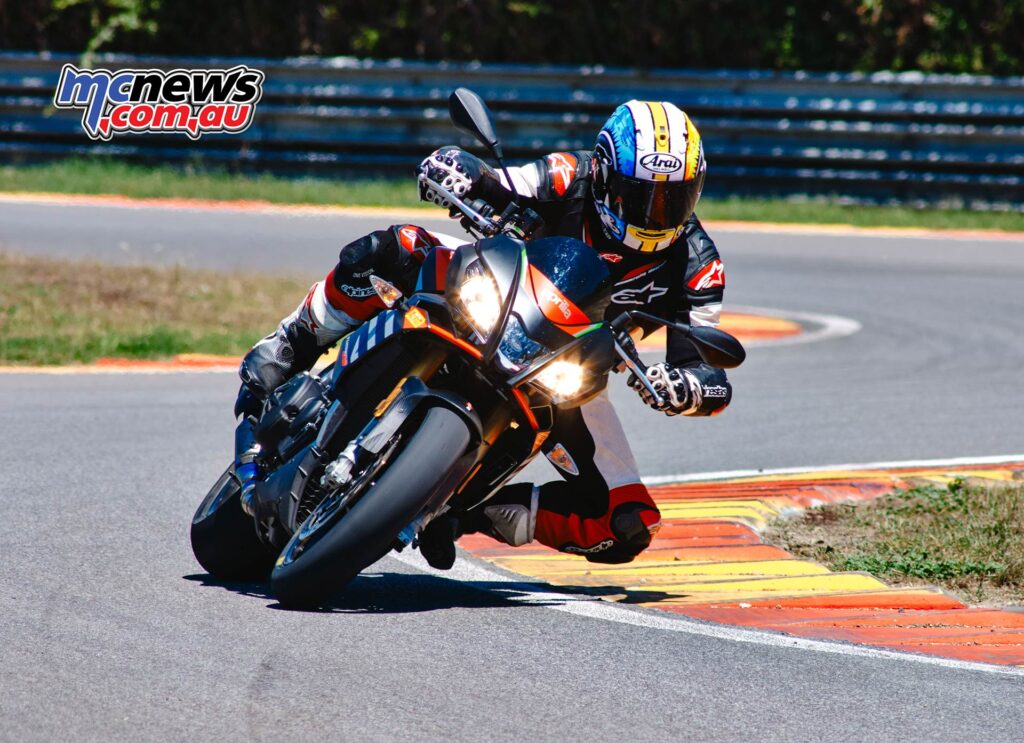
The fuelling is superb, the best of the bunch, which allows you to dial in the power with accuracy. The clutchless gear changes are also perfect, again the best of the group. The sound, the way the V4 revs, lovely – like a fine wine the Tuono has matured into an exceptional super naked.
When you push for a lap time, the Aprilia is hard to criticise. The braking is consistent, and you wouldn’t know it has ABS. Even when braking devilishly late the Brembo stoppers show no sign of fading.
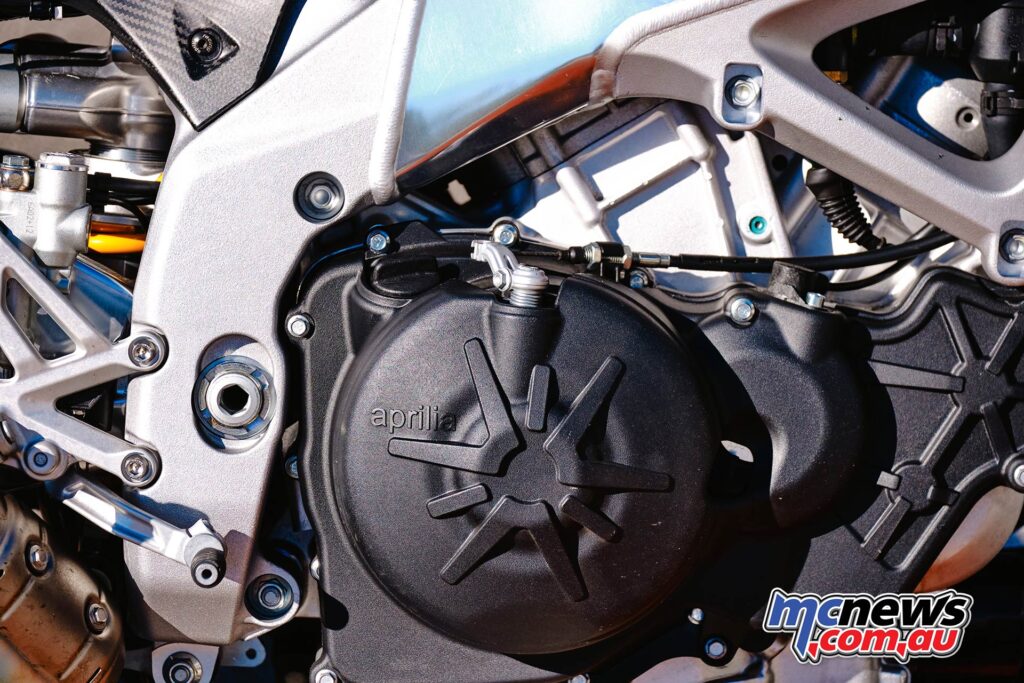
Corner speed is exciting, ground clearance isn’t an issue and the wide, relaxed riding position allows you to throw the bike around with ease. The chassis is superb, the feedback forensic, and only the KTM Super Duke has more accurate steering. I didn’t think the Aprilia would be this good, but it was far easier than the MV and Ducati V4s to ride at speed.
In race mode the Öhlins semi-active suspension is on the gentle side. There is a little understeer during heavy braking or when you’re rolling into a fast corner with a closed throttle, which could be because the front is a little soft or the rear is a fraction high and overextending.
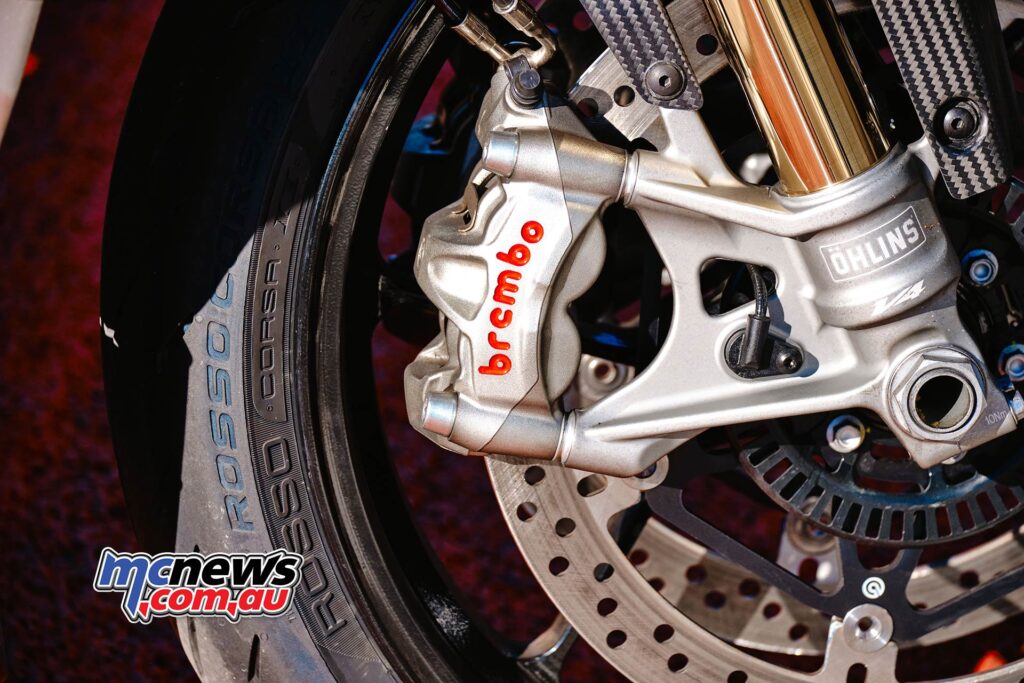
Where the Aprilia lacked was in outright power, which sounds crazy on a bike with 157 hp at the back wheel. The Aprilia was the second slowest from 60-180 km/h, but to take second spot on track in this highly contested category is impressive for bike with the least power – and validates just how good that chassis is.
3rd position: MV Brutale 1000RR
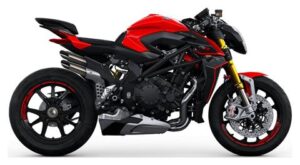 Claimed Power/Torque – 205 hp / 116.5 Nm
Claimed Power/Torque – 205 hp / 116.5 Nm
Measured Power/Torque – 175.4 hp / 105.4 Nm
Tested Weight (Empty Tank) – 186 kg
MLP – 52,190- Ride Away
All the qualifications were there for the MV to take victory, big power and the Brutale is based on the F4 superbike, and historically MV have always been track focused, but it was just pipped into third position by the Aprilia.
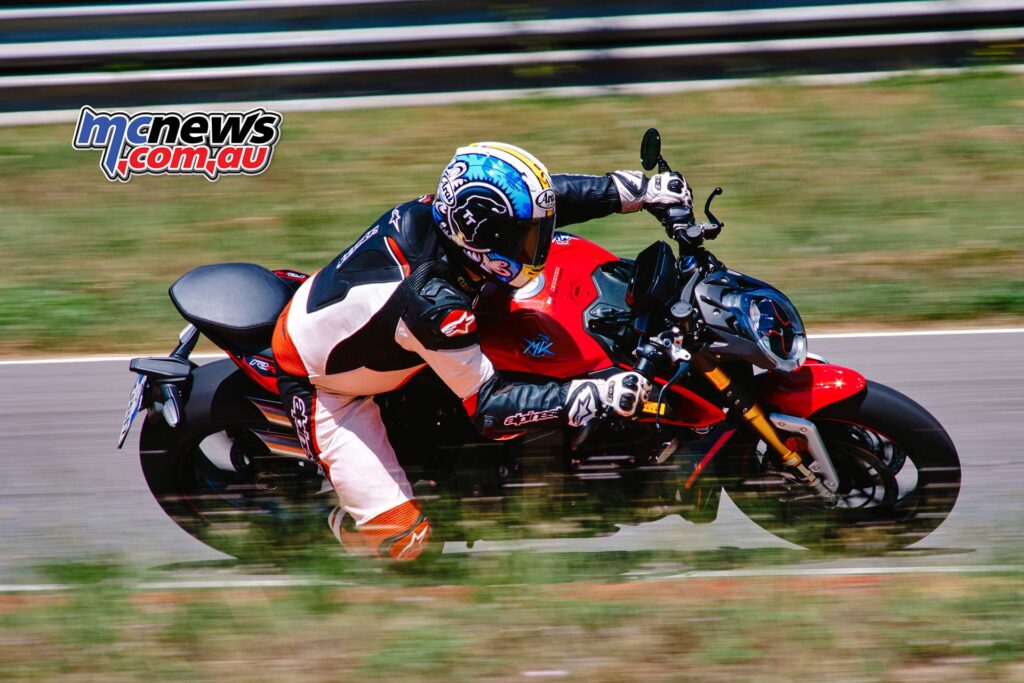
The MV has more tested power than the Aprilia and shares the same tested weight (186 kg), and it has a higher top speed than the Aprilia, leans over further and takes less time accelerating between 60-180kph, so why did it get beaten?
Sadly, it was down to the brakes. On the track the ABS is too intrusive and the cycling of the brakes is too slow. This, mixed with unpredictability, didn’t give any assurance when we were really pushing for a lap time. Sometimes the intervention was distractingly noticeable, which made me run way too deep into the turn, on other occasions, it wasn’t too bad, though not on par with the others, including the heavy Kawasaki. Yes, at regular track day speeds the braking was fine, but with slicks fitted and the lap time to chase, they were the worst of the bunch. With improved ABS, the MV would have lapped quicker than the Aprilia, and much closer to the Ducati.
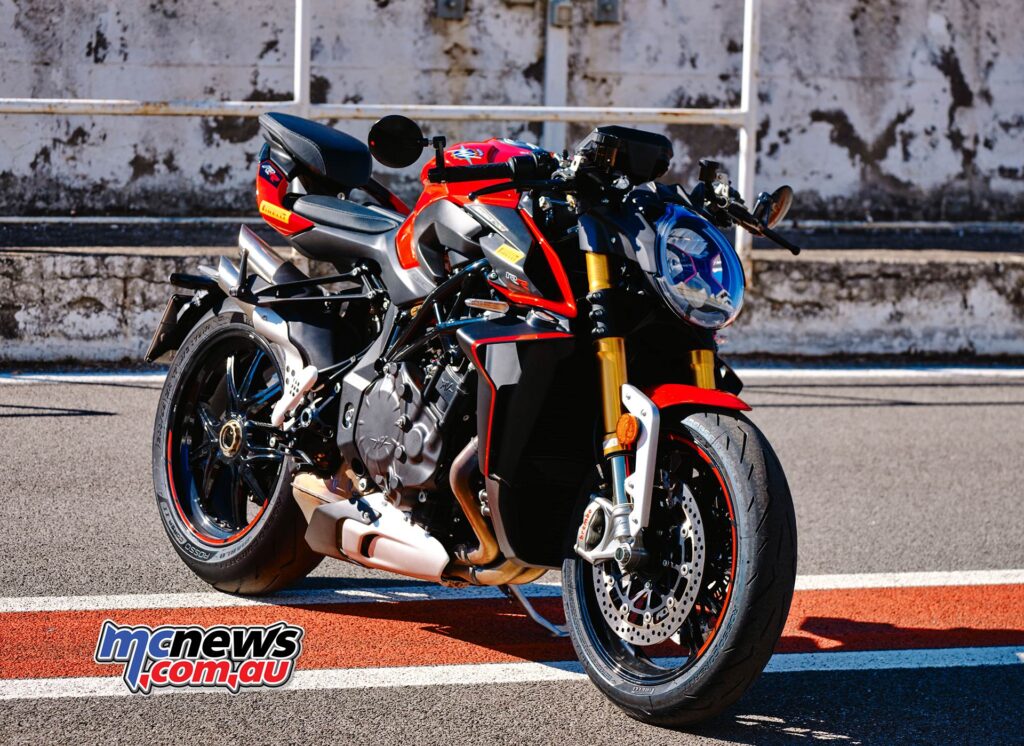
The best compliment I can bestow is that the MV feels like a race bike with the bodywork removed. The steering is pin-sharp, the dropped down bars giving a racy feel and allowing a proper tuck on the straight, with your arse up against the rear seat… it’s the best of the bunch at high speeds. And ABS aside, the other electronic rider aids perform quite well and the traction control does not hold you back.
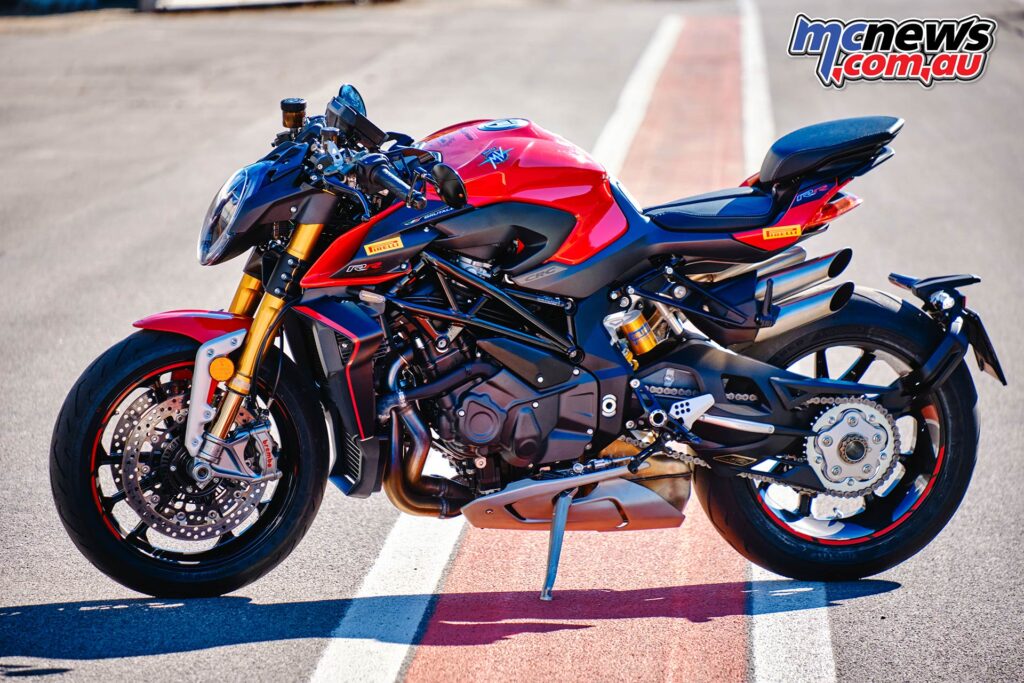
MV have squeezed every last horsepower from the 998 cc inline-four with new and lighter internals like titanium rods and, boy, now it loves to scream. Below 8000 rpm there’s not a lot going on but above that, wow, it just keeps revving and pushing you forward. Even in top gear the power didn’t seem to tail off, it just kept accelerating.
4th position: KTM Super Duke 1290 R
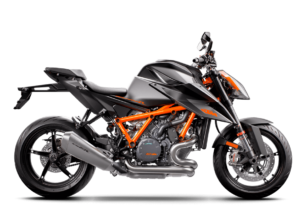 Claimed Power/Torque – 177 hp / 140 Nm
Claimed Power/Torque – 177 hp / 140 Nm
Measured Power/Torque – 163 hp / 131.6 Nm
Tested Weight (Empty Tank) – 189 kg
MLP – $26,195 +ORC – $28,095 Ride Away
Like the Kawasaki the KTM has manually adjustable suspension, not semi-active like the Italians. But this isn’t a negative; far from it. The suggested track settings for the KTM are printed under the seat, and it takes a few rewarding minutes to dial in the recommended settings which make a huge difference, and are well worth doing.
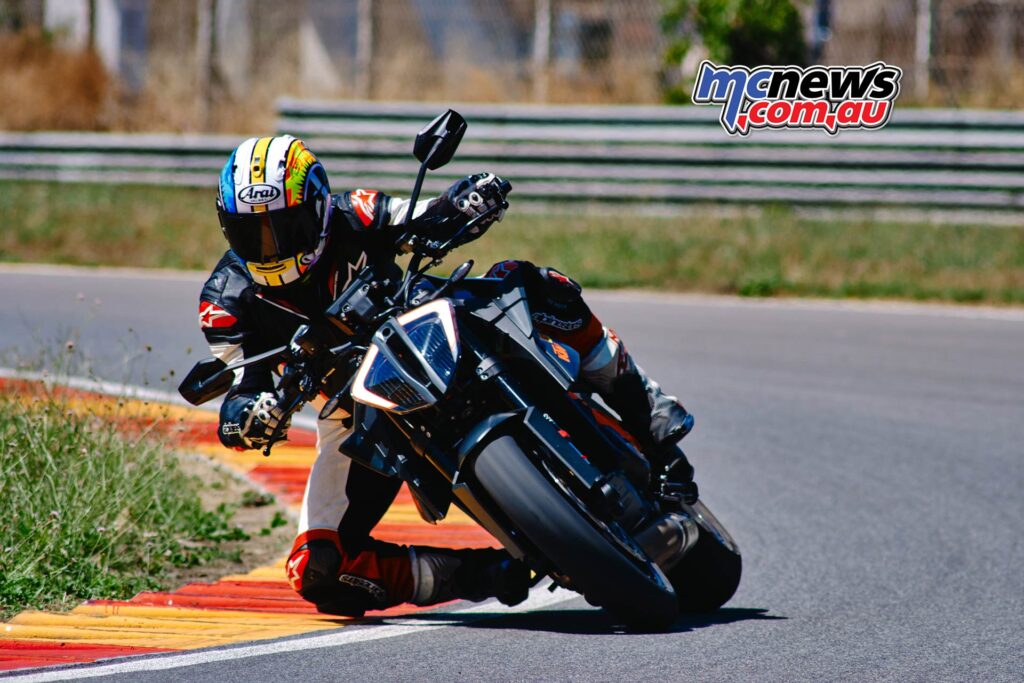
At Pergusa, the KTM was the easiest bike to ride, unlike the Ducati which while very fast was bloody hard work. The KTM power delivery is just so smooth, you don’t have to be all that accurate with the throttle; just dial in that massive mid-range torque and start accelerating early. It’s a doddle to ride at speed.
I adored the KTM on track. Its steering, turn-in and accuracy were almost certainly the best of the bunch, inch perfect apex after apex. You can trail the powerful brakes into the turn (cornering ABS isn’t intrusive), mid-corner there is loads of feel and grip which boosts confidence. The KTM recorded the second highest lean angle, an impressive 52.5 degrees.
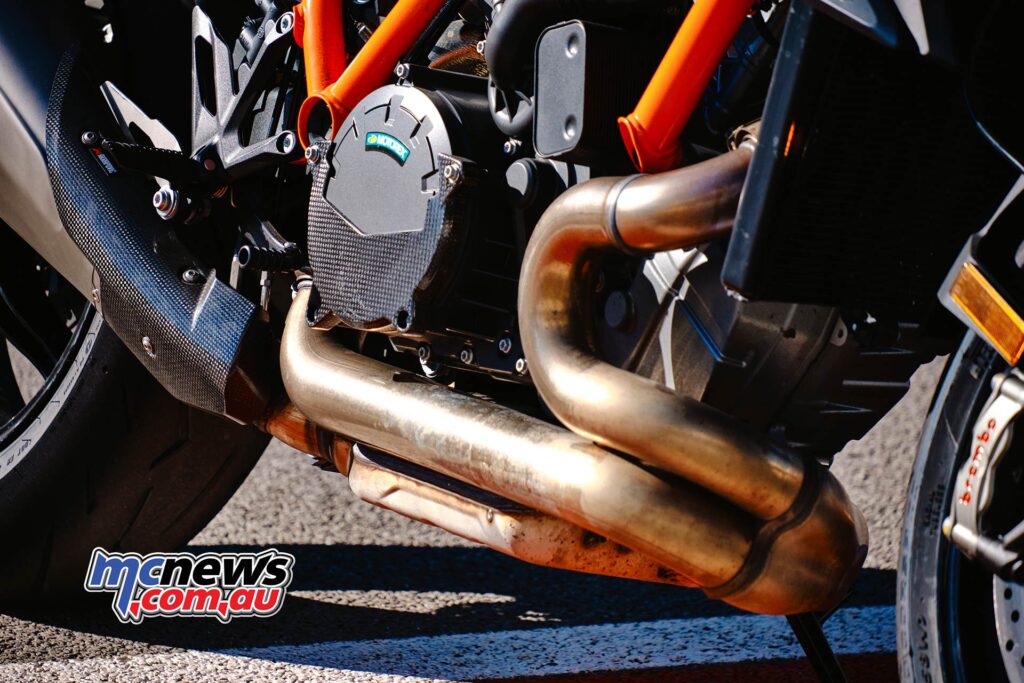
Out of the turn, you can get on the power early – the rider aids set to minimum are not intrusive – while the throttle connection is sweet. With the 1290R I was always on the power the earliest; it would get a real jump on the initial drive when the bike is still cranked over.
Lap times, it does appear a little sub-standard, only beating the heavy Kawasaki, and 1.5 seconds slower than the third-placed MV. The handing was brilliant but the KTM was let down by its comparatively slow-revving motor, especially in the taller gears of 5th and 6th. It was the slowest from 60-180 km/h, and the second slowest down the straight, 10 km/h slower than the MV.
5th position: Kawasaki ZH2
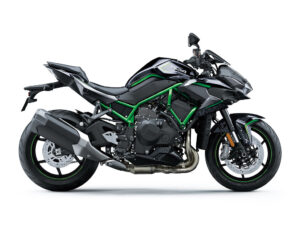 Claimed Power/Torque – 197 hp / 137 Nm
Claimed Power/Torque – 197 hp / 137 Nm
Measured Power/Torque – 160.1 hp / 115.7 Nm
Tested Weight (Empty Tank) – 230 kg
MLP – $23,000 +ORC
You could perhaps say that the Kawasaki shouldn’t have been included, but it is a supercharged super-naked that Kawasaki chose to initially launch on a racetrack. To be honest, we just wanted to see how fast it really was. However, as the lap-times show, the Kawasaki was outshone by much racier competition.
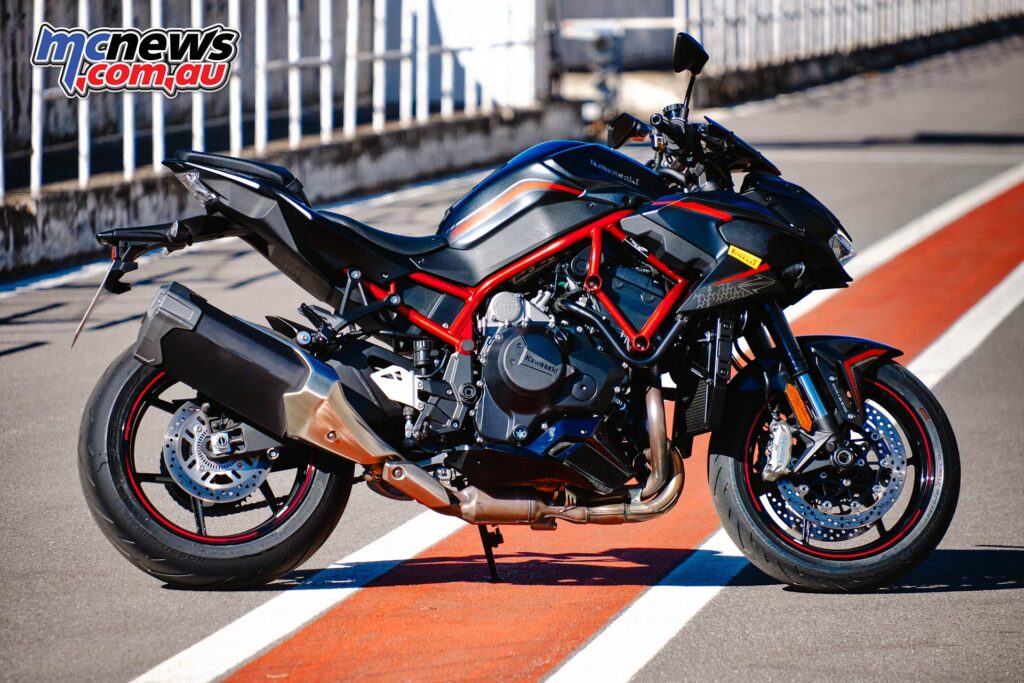
As soon as you leave pit-lane you’re mindful you’re on a road bike, not a naked bike derived from a race bike. At track day pace, it’s easy to manage for such a big powerful bike and the supercharger’s ‘chirp’ is lovely. Grunt is impressive, too, it really drives hard out of the second gear chicanes. With the Pirelli slicks finding endless grip I could get on the power reasonably early and drive hard down the next straight.
The data confirms this: 5.33 seconds from 60-180 km/h, the second quickest bike across this measure on test. Top speed was down despite the supercharged power, but not bad considering the bike’s weight (230 kg measured) and un-aerodynamic bulk. 245 km/h is still quick.
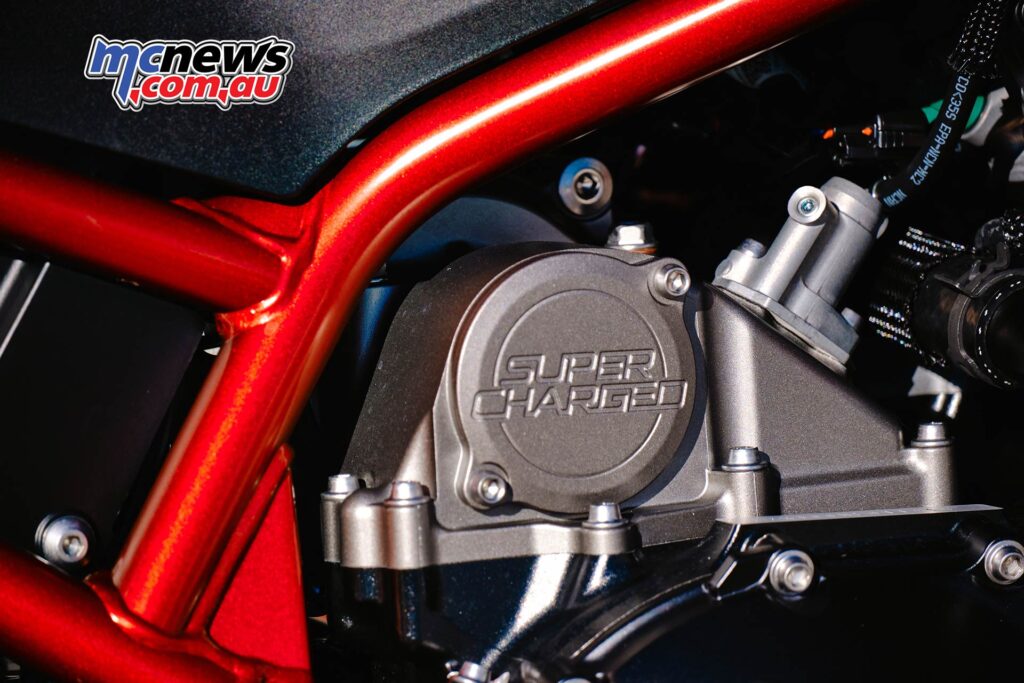
You can’t trim the rider aids as much as the competition, but still they’re more than adequate on track so few complaints there. You only discover issues on the Kawasaki when you start to push for a lap time. Ground clearance soon becomes a boundary (as you can see by the lean angle data), and is the worst of the bunch. Then the rear shock starts to give up the fight. We added pre-load to increase the ground clearance and aid the shock, but it still wasn’t up for the challenge.
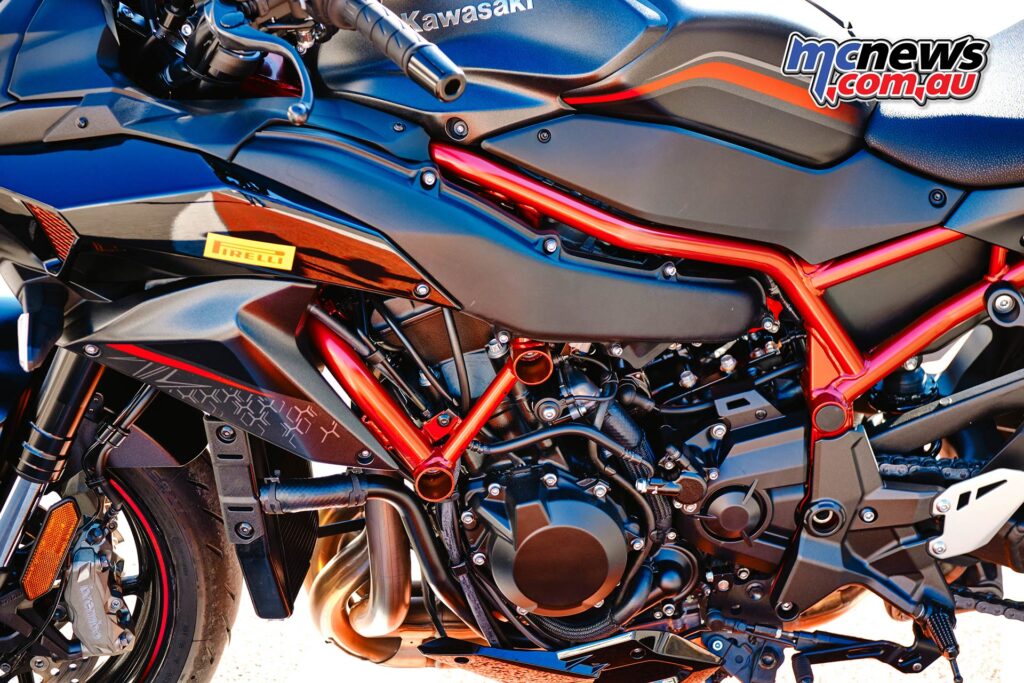
The braking was solid considering the bike’s weight, with no fading and no alarming interference from the ABS, but the Kawasaki’s excessive bulk was again evident during fast direction changes. This probably wouldn’t be much of an issue at normal track day speeds, but it was when pushing for a lap time on Pirelli slicks. Lose some weight of the Kawasaki, fit a quality aftermarket rear shock, and it wouldn’t be a half bad track tool.
